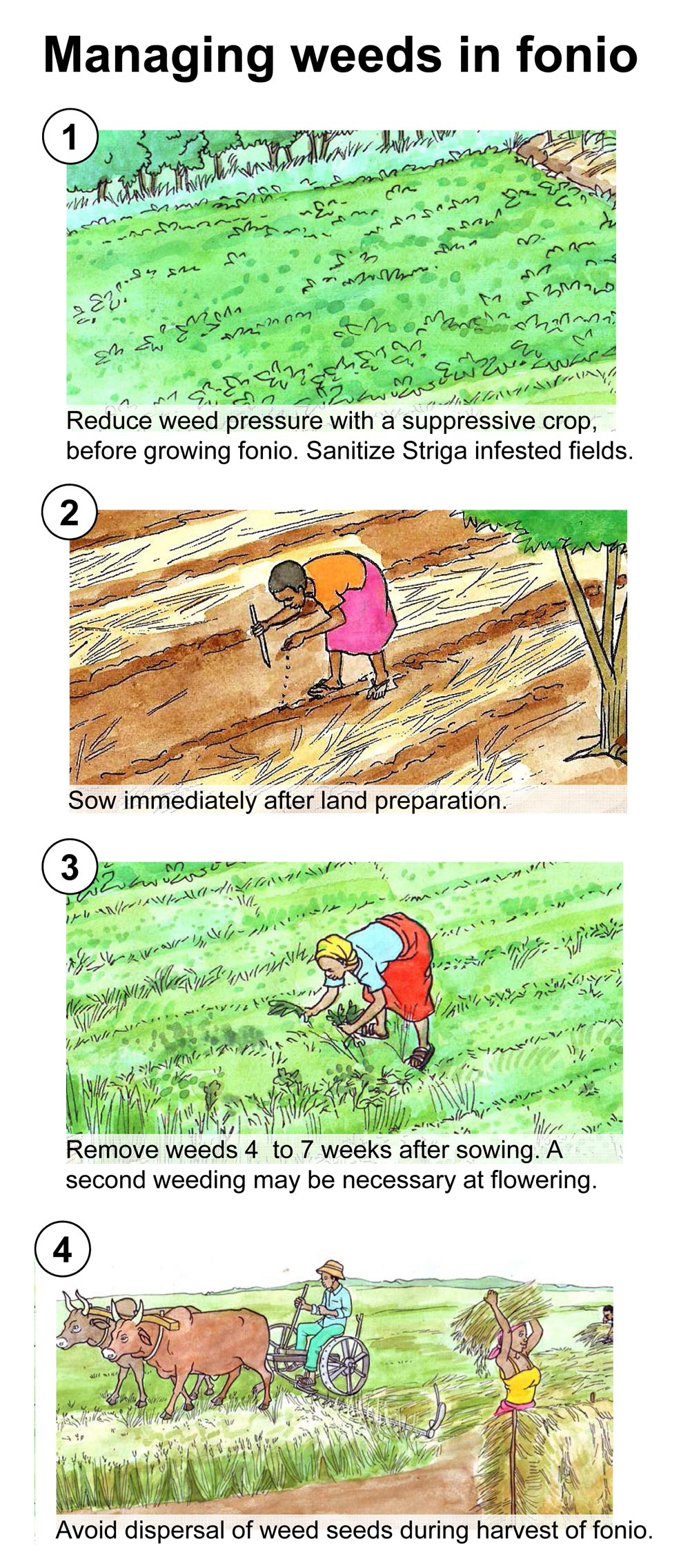Proper weed management

Fonio seeds germinate rapidly. But despite its quick establishment, fonio is sensitive to competition from other plants for light, water and nutrients, as it does not grow tall and does not build a dense soil cover to prevent other seeds from germinating. Without weeding, this can result in high competition of the crop by weeds, and of contamination of the harvest by weed seeds.
Therefore, fonio should not be grown on fields where weed pressure is high without applying preventive and cultural measures that help to manage the weeds. During growth usually one or two hoeing rounds are necessary to control weeds and obtain reasonable yields.
Fonio is also host of the parasitic weed Striga and should not be grown on fields where Striga occurs without proper practices to control the Striga.
Recommended weed control measures in fonio production:
- Proper crop rotation: Rotation of fonio with other crops, which cover the soil well and suppress weeds, limits propagation of weeds on a field and thus reduces weed pressure.
- Planting immediately after land preparation: The earlier fonio is sown after land preparation, the better it allows germination of the crop before other seeds improving its competitiveness during the early stages of growth.
- Weeding: In most cases a fi rst weeding 4 to 7 weeks after sowing reduces competition from weeds and has a very positive impact on yield. A second weeding may be necessary at flowering.
- Control of Striga: To prevent introduction of Striga seeds to the field, only clean fonio seeds should be used. Rotation and intercropping of fonio with Striga trap crops like plumed cockscomb (Celosia argentae) and cotton limit development of the parasitic weed (for further information on Striga control see module 9.4 on sorghum).
Effective pest and disease management
Although pests and diseases can reduce the growth and performance of fonio, they are in most cases a minor problem. The most common diseases that affect fonio are caused by the fungi Phyllachora sphearosperma and Helminthosporium spp. and rust caused by Puccinia oahuensis. Occasionally some insect pests cause signifi cant seed losses. Birds like to feed on freshly sown seeds and on ripening grains. To avoid major losses after sowing and in the last days before harvest, bird scaring is recommended.
Control of fonio diseases
Diseases are best controlled by planting tolerant or resistant cultivars, if available, and by employing cultural measures like proper crop rotation, sowing early in the season and removing infected ears at harvest. The effectiveness of these control measures is however minimal if the measures are applied individually.
Seed treatment with natural fungicides such as ashes and botanicals like neem and castor leaves can hinder development of fungal diseases that are transmitted on seeds.

Comments
Post a Comment